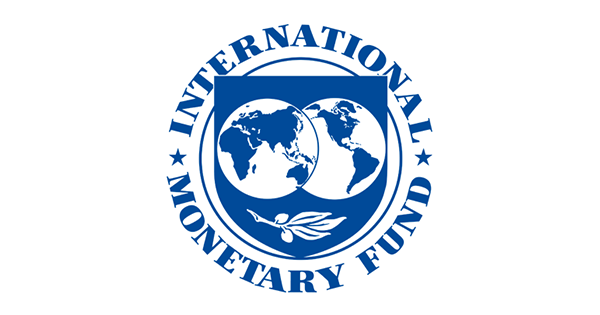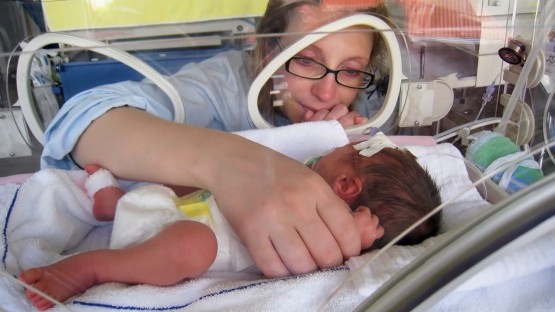Stronger muscles might be able to ward off some of the organ damage associated with obesity.
People with excess body fat who also had stronger handgrip strength were less likely to develop obesity-related heart, liver or kidney damage,…

Stronger muscles might be able to ward off some of the organ damage associated with obesity.
People with excess body fat who also had stronger handgrip strength were less likely to develop obesity-related heart, liver or kidney damage,…
(Alliance News) – Mila Resources PLC said on Thursday it has completed diamond drilling at the Yarrol project in Queensland, Australia.
The London-based post-discovery gold exploration firm said samples are currently being prepared for dispatch to the laboratory for gold and multi-element analysis.
Mila Resources said all activities remain on schedule and within the budget allocated for phase two exploration at Yarrol.
The laboratory results will be incorporated into an updated geological model and used to design the forthcoming reverse circulation drilling campaign, which Mila Resources expects to commence before the end of 2025.
Chair Mark Stephenson said: “The completion of this diamond drilling campaign marks a significant step forward for Mila at Yarrol. The programme has given us crucial structural data that sharpens our understanding of the mineralisation controls and positions us to target higher-grade zones with greater precision in the next round of drilling.
“With assays now pending, we look forward to sharing results with our investors and stakeholders in the forthcoming weeks and to advancing swiftly into the RC campaign later this year, which is fully funded from our capital raise earlier this year.”
Shares in Mila Resources closed down 6.5% on Thursday afternoon in London at 1.45 pence.
By Roya Shahidi, Alliance News reporter
Comments and questions to newsroom@alliancenews.com
Copyright 2025 Alliance News Ltd. All Rights Reserved.

The origin of water on Earth is a complex affair. Was it trapped in the rocks that formed our planet or was it brought by comets and asteroids afterwards? We do not know for sure, but we can move the question even further. Did the water form with…
This request seems a bit unusual, so we need to confirm that you’re human. Please press and hold the button until it turns completely green. Thank you for your cooperation!

October 16, 2025
Yerevan, Armenia: An International Monetary Fund (IMF) team led by Alexander Tieman visited Yerevan from September 17-30, 2025, to conduct discussions for the Sixth review under the current Stand-By Arrangement (SBA) with Armenia and the authorities’ request of a new 36-month SBA. At the conclusion of the discussions, Mr. Tieman issued the following statement:
“The IMF team and the Armenian authorities have reached a staff-level agreement on policies for the completion of the sixth review under the three-year SBA as well as for a new 36-month, SDR 128.8 million (about US$175 million) SBA, which will continue to support Armenia’s economic reform program. The agreement is subject to approval by the IMF’s Executive Board later this year.
“Armenia’s economic activity remains robust, with real GDP growth of 5.6 percent in the first half of the year, driven by buoyant consumption and investment as well as strong tourism arrivals. Employment growth has remained steady, and inflation has temporarily picked up to 3.7 percent y/y in September, driven largely by food and services prices. The current account deficit has remained stable, reflecting strong domestic demand and normalization of goods trade, offset by strong tourism. Prudent execution of the 2025 budget has resulted in a small overall fiscal deficit of 0.4 percent of GDP through June 2025, which was lower than projected on the back of robust tax revenue performance, buoyed by strong economic activity, alongside under-execution in both current and capital expenditures. Central government debt remains moderate at 48 percent of GDP at end 2024. The banking system is highly profitable and features strong capital and liquidity buffers.
“Real GDP growth is expected to remain strong reaching about 5 and 5.5 percent in 2025 and 2026, respectively. Inflation is expected to remain around the Central Bank of Armenia’s (CBA) target by end-2025. Risks to this outlook stem mainly from the uncertainty related to the ongoing global trade tensions and potential slowdown in the growth of trading partners, and regional geopolitical risks. On the upside, growth could exceed expectations if net exports perform better than anticipated and if transport links underpinning the peace declaration are implemented more swiftly.
“The draft 2026 budget targeting a deficit of 4.5 percent of GDP, aims to preserve macro-fiscal stability while supporting Armenia’s priority spending needs, including on social protection, security, health, education, and infrastructure. Over the medium term, careful expenditure prioritization alongside tax policy efforts and strengthened revenue administration will continue to support a gradual fiscal consolidation to maintain debt at a moderate level. Reforms to strengthen medium-term fiscal planning, enhance public financial management—including through robust fiscal risk management and transparency—and bolster the public investment management framework remain critical to support fiscal efforts.
“Amid contained inflationary pressures and anchored inflation expectations, the current monetary policy stance is appropriate. In view of the significant uncertainty, the Central Bank of Armenia (CBA) should continue to monitor closely economic developments and inflation expectations and stand ready to adjust its policy rate as needed. The flexible exchange rate remains a key shock absorber, and the authorities’ commitment to maintaining adequate international reserve buffers is welcome. The CBA continues to vigilantly monitor financial sector risks and to upgrade its supervisory toolkit and capacity, including related to crypto assets.
“The government’s structural reform agenda appropriately focuses on strengthening economic resilience and fostering inclusive growth, including by boosting labor force participation among vulnerable populations, encouraging diversification in the country’s export basket and markets, and improving the business environment. Achieving these objectives requires timely and effective implementation of the authorities’ employment and export strategies, prioritizing governance reforms, and upgrading the insolvency framework to support quality investments.
“The IMF team thanks the Armenian authorities, private sector, development partners, and the diplomatic community for fruitful discussions and cooperation.”
PRESS OFFICER: Wafa Amr
Phone: +1 202 623-7100Email: MEDIA@IMF.org

Children with LIS1 – Lissencephaly are born with a brain in which the typical furrows and convolutions are severely reduced or completely absent. This rare genetic disorder leads to severe developmental disorders, epileptic seizures and a…

Among preterm newborns, greater exposure to the mother’s voice after birth appeared to speed up the maturation of a key language-related brain circuit, in a small clinical trial conducted by investigators at Weill Cornell Medicine, Burke…

The combination of teclistamab-cqyv (Tecvayli) and daratumumab and hyaluronidase-fihj (subcutaneous daratumumab; Darzalex Faspro) demonstrated an improvement in progression-free survival (PFS) and overall survival (OS) compared with subcutaneous daratumumab plus pomalidomide and dexamethasone (DPd) or subcutaneous daratumumab plus bortezomib and dexamethasone (DVd) in patients with relapsed or refractory multiple myeloma who received 1 to 3 prior lines of therapy, according to topline data from the phase 3 MajesTEC-3 trial (NCT05083169).1
Additionally, the safety profile of teclistamab with daratumumab was consistent with the known safety profiles of each agent as monotherapy. Full results from the phase 3 study are expected to be presented at an upcoming medical meeting and submitted to global health authorities for review.
“[Teclistamab] is the most utilized BCMA[-targeted] bispecific [antibody] in later lines of myeloma treatment, supported by extensive clinical and real-world evidence. These results [from MajesTEC-3] demonstrate the clinical benefits of teclistamab in earlier lines when used in combination, as evidenced by meaningful PFS and OS outcomes,” Maria-Victoria Mateos, MD, PhD, a consultant physician in Hematology at the University Hospital of Salamanca, stated in a news release. ” [Teclistamab and subcutaneous daratumumab] uniquely work together to target both BCMA and CD38 simultaneously, priming and activating the immune system and eliminating myeloma cells.”
In October 2022,
The phase 3 MajesTEC-3 trial was a randomized, open-label study designed to evaluate the efficacy and safety of teclistamab plus subcutaneous daratumumab compared with DPd or DVd in patients with relapsed or refractory multiple myeloma.3
Eligible patients were required to have a confirmed diagnosis of multiple myeloma after 1 to 3 prior lines of therapy that included a proteasome inhibitor (PI) and lenalidomide (Revlimid). Those who received only 1 prior line of therapy needed to be refractory to lenalidomide. Other key inclusion criteria comprised evidence of progressive disease, an ECOG performance status of 0 to 2, and adequate laboratory values.
Participants were randomly assigned to receive either teclistamab/daratumumab or investigator’s choice of DPd or DVd. In the experimental arm, step-up doses of teclistamab were administered prior to the first full dose.
Along with the primary end point of PFS and key secondary end point of OS, other secondary end points included overall response rate, very good partial response or better rate, complete response or better rate, minimal residual disease–negativity rate, time to second disease progression, PFS on next line of therapy, time to next treatment, duration of response, and safety.
“The MajesTEC-3 study results of [teclistamab and daratumumab], two of our most important agents, demonstrate Johnson & Johnson’s leadership in developing regimens with complementary and synergistic mechanisms of action for patients with multiple myeloma. We are confident this combination is poised to be a new standard of care option,” Yusri Elsayed, MD, MHSc, PhD, global therapeutic area head of Oncology at Johnson & Johnson Innovative Medicine, added in a news release.1 “The increase in PFS and OS is another example of how our portfolio is fundamentally transforming how patients with multiple myeloma are treated.”